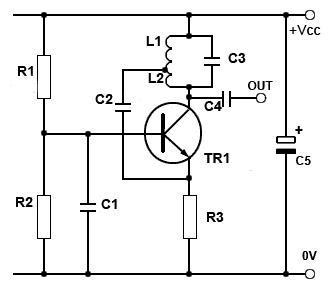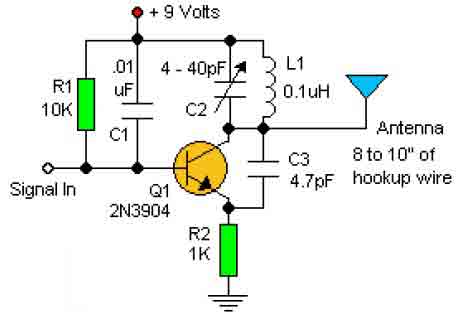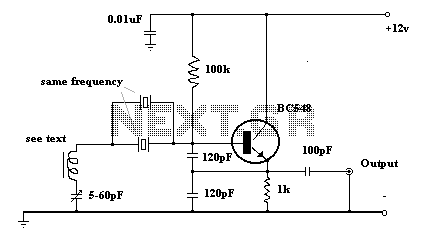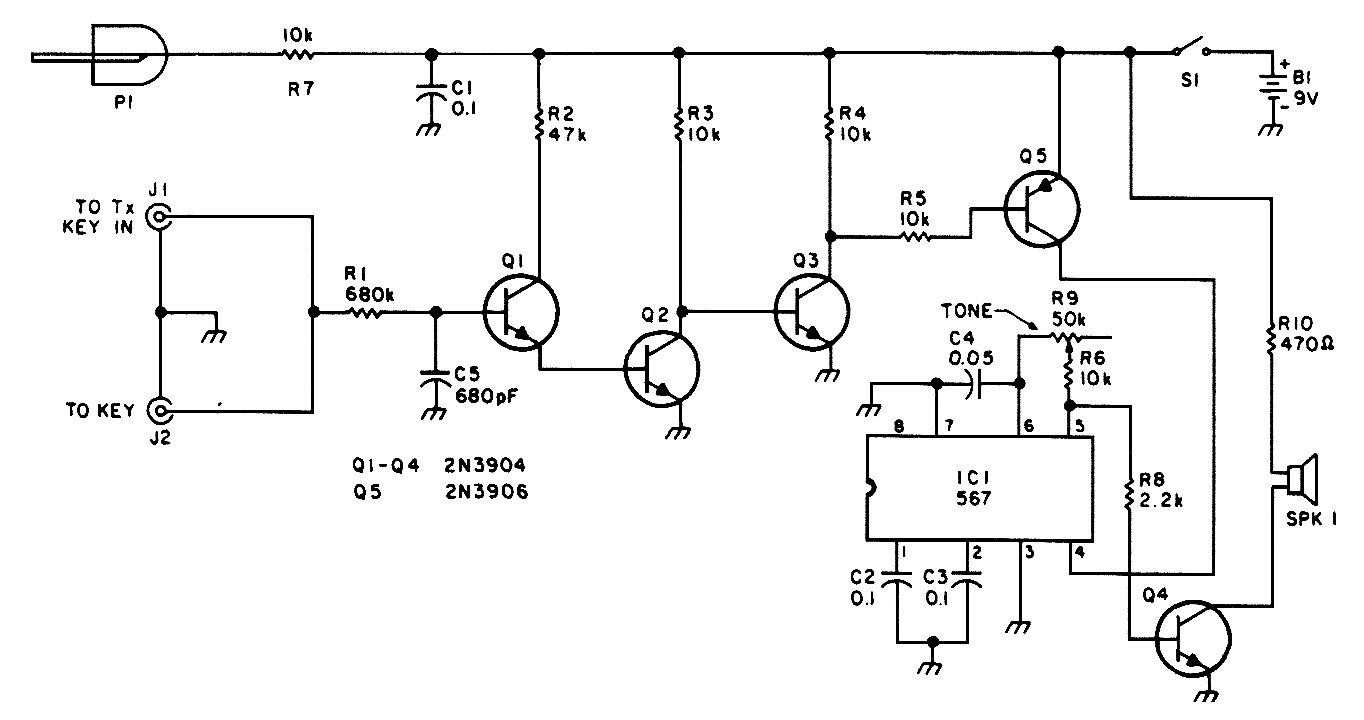
Butler aperiodic oscillator
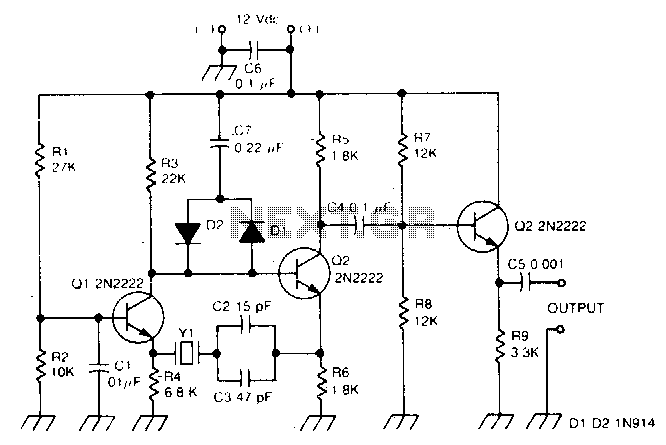
This circuit operates effectively within the frequency range of 50 kHz to 500 kHz. Minor component modifications are required for functioning at higher frequencies. For frequencies exceeding 3000 kHz, it is advisable to choose a transistor that offers moderate gain, specifically within the range of 60 to 150, at the desired frequency, along with a gain-bandwidth product of no less than 100 MHz.
The circuit in question is designed to function optimally between 50 kHz and 500 kHz, making it suitable for applications that require precise frequency control within this bandwidth. The design allows for minor adjustments to components, enabling the circuit to adapt to higher frequency operations. When operating at frequencies above 3000 kHz, careful selection of the transistor is critical to maintain performance.
The transistor should be chosen based on its gain characteristics, specifically targeting a moderate gain between 60 and 150, which ensures that the circuit can maintain stability and efficiency at higher frequencies. Additionally, the gain-bandwidth product is a crucial parameter; a minimum of 100 MHz is recommended to ensure that the transistor can adequately amplify signals without distortion or loss of fidelity at elevated frequencies.
In practical terms, this means that the circuit may utilize a variety of transistors, including BJTs or FETs, depending on the specific application requirements. The choice of passive components, such as resistors and capacitors, may also need to be adjusted to accommodate the desired frequency response and to ensure that the overall circuit maintains its integrity across the intended frequency range. By adhering to these guidelines, the circuit can be effectively optimized for both moderate and high-frequency applications.This circuit works well in the range of 50 kHz to 500 kHz. Slight component modifications are needed for higher frequency operation For operation over 3000 kHz, select a transistor that provides moderate gain (in the 60 to 150 range) at the frequency of operation and a gain-bandwidth product of at least 100 MHz.
The circuit in question is designed to function optimally between 50 kHz and 500 kHz, making it suitable for applications that require precise frequency control within this bandwidth. The design allows for minor adjustments to components, enabling the circuit to adapt to higher frequency operations. When operating at frequencies above 3000 kHz, careful selection of the transistor is critical to maintain performance.
The transistor should be chosen based on its gain characteristics, specifically targeting a moderate gain between 60 and 150, which ensures that the circuit can maintain stability and efficiency at higher frequencies. Additionally, the gain-bandwidth product is a crucial parameter; a minimum of 100 MHz is recommended to ensure that the transistor can adequately amplify signals without distortion or loss of fidelity at elevated frequencies.
In practical terms, this means that the circuit may utilize a variety of transistors, including BJTs or FETs, depending on the specific application requirements. The choice of passive components, such as resistors and capacitors, may also need to be adjusted to accommodate the desired frequency response and to ensure that the overall circuit maintains its integrity across the intended frequency range. By adhering to these guidelines, the circuit can be effectively optimized for both moderate and high-frequency applications.This circuit works well in the range of 50 kHz to 500 kHz. Slight component modifications are needed for higher frequency operation For operation over 3000 kHz, select a transistor that provides moderate gain (in the 60 to 150 range) at the frequency of operation and a gain-bandwidth product of at least 100 MHz.
